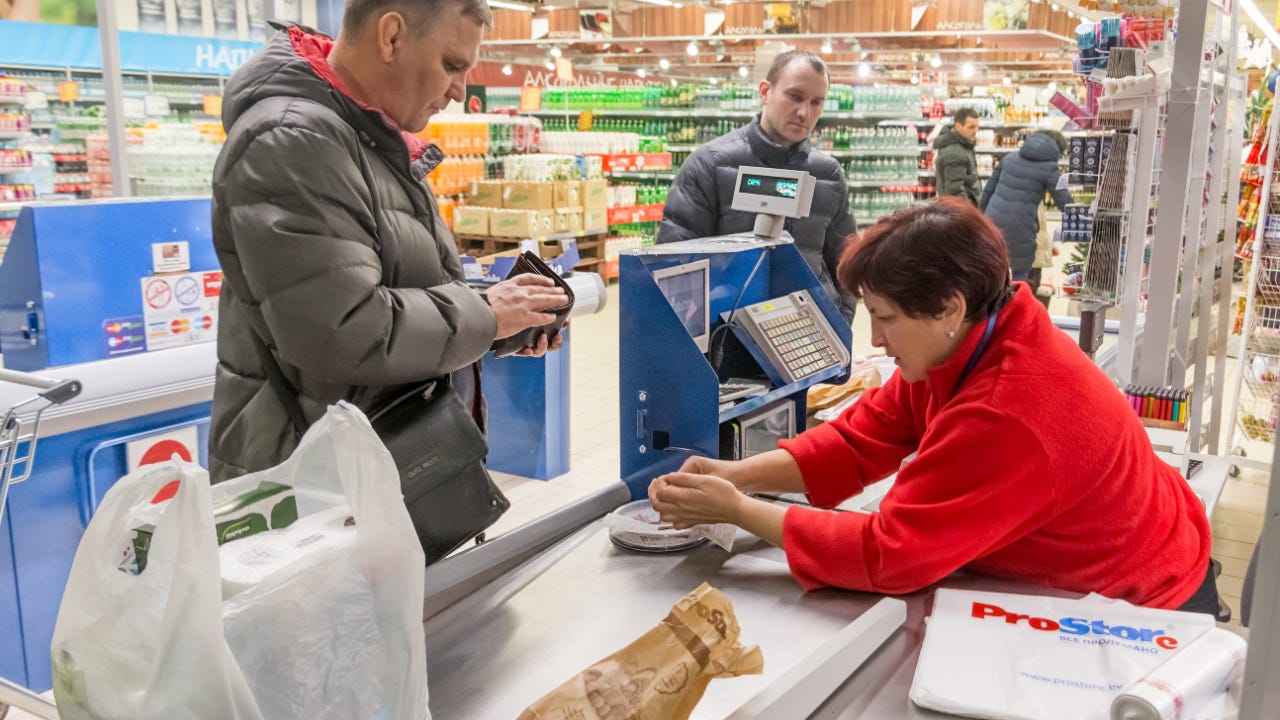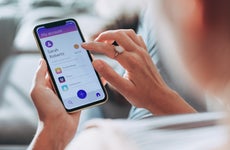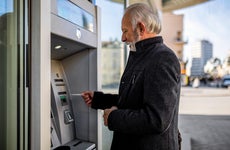6 reasons to be unbanked or underbanked

The Bankrate promise
At Bankrate we strive to help you make smarter financial decisions. While we adhere to strict , this post may contain references to products from our partners. Here's an explanation for .
The U.S. financial system has a massive reach — more than 4,000 banks and nearly 5,000 credit unions are scattered across the country. However, plenty of Americans never step inside their branches, download their apps or deposit money in their accounts.
They’re known as the unbanked, and the most recent numbers from the Federal Deposit Insurance Corp. (FDIC) show that 4.5 percent of U.S. households — about 5.9 million people — are unbanked. A further 14.1 percent of U.S. households are considered underbanked.
There are various reasons people lack a strong relationship with a bank, some of which involve past money mistakes or lack of financial literacy. Fortunately, there are ways of improving one’s financial health that can help provide access to a bank.
What does it mean to be unbanked?
A household is considered “unbanked” when no one in the household has a checking or savings account at a bank or credit union. Unbanked individuals use alternative means to manage their money, such as:
- Prepaid debit cards
- Payment services that don’t require a bank account, such as PayPal or Venmo
- Check-cashing services
- Nonbank money orders
- Using cash for purchases
The FDIC breaks down data of unbanked households, showing that of the total population surveyed, 4 percent of households are longer-term unbanked, meaning they haven’t had a bank account for at least a year, and 0.5 percent are recently unbanked, meaning they did have a bank account within the last year.
About a fifth of those recently unbanked cite losing a job or a significant portion of income as the reason for closing their bank account. Meanwhile, the top-cited reason among all unbanked households for having no bank account is not having enough money to meet minimum balance requirements.
When it comes to race and other demographics, the percent of households that are unbanked varies significantly:
- Single-mother households: 15.9 percent
- Married couples: 1.8 percent
- Black households: 11.3 percent
- Hispanic households: 9.3 percent
- White households: 2.1 percent
What does it mean to be underbanked?
Underbanked households are those that do have a bank account but have to rely on nonbank financial services for certain banking needs, such as getting loans or a credit card. About 14.1 percent of U.S. households — or 18.7 million in total — are underbanked, according to the FDIC survey.
Those who are underbanked may have limited access to their bank accounts or limited transactional capabilities. Only 38.1 percent exclusively used their bank account for paying bills or receiving income, compared with 81.6 percent of fully banked households. Underbanked households are also more likely to take out nonbank personal loans.
Reasons why people are unbanked or underbanked
Here’s a look at six common reasons people are unbanked, along with possible solutions for each problem or belief.
1. Your past financial behavior put you on a no-account list
Consumers with a history of unpaid overdraft fees or bounced checks may be blacklisted from opening a new deposit account.
“If you’re unbanked, you may have a bad ChexSystems report due to some financial setbacks or stumbles,” says Bruce McClary, senior vice president of communications at the National Foundation for Credit Counseling (NFCC).
What you should do: Explore options designed to give you a second chance
Some banks offer second-chance accounts, which are geared toward those with a poor credit history. Chime and Wells Fargo are two of the most well-recognized national names that offer accounts for those who have struggled to open a traditional checking account. You might also look closer to home and compare options at smaller institutions in your community.
“There are community banks and credit unions that have creative programs to provide a pathway toward restoring your relationship or creating a new one with a bank or a credit union,” McClary says.
2. You don’t trust banks
Some banks have made headlines for selling customers products they don’t need or creating fake accounts for customers in the name of earning a profit. If those behaviors have made you skeptical of banks, you’re not alone: 33 percent of unbanked consumers in the FDIC’s latest research say that they don’t trust banks.
What you should do: Trust the system
“If you do not completely trust banks, you can trust the systems in place that hold banks accountable for their actions,” McClary says. “With the banking industry, there are a lot of regulations and rules. There are consequences if a bank breaks those rules that protect consumers quite well.
“You can work with a bank knowing that your interests are protected. “You have recourse if a bank breaks the rules and causes financial harm.”
One of the regulators that keeps banks in check and protects consumers from being exploited by them is the Consumer Financial Protection Bureau (CFPB). If there’s an issue with your bank, you can submit a complaint to the CFPB.
3. You’re worried about meeting minimum balance requirements
Many checking accounts waive their monthly fee if you maintain a set minimum balance each month. About 40 percent of unbanked consumers say that they don’t have enough cash to meet that minimum balance.
What you should do: Look for an account with no minimum balance requirement
By doing a little research, you can find bank accounts that don’t require a set minimum balance or charge a monthly service fee. Banks that offer such free accounts include Ally and Capital One.
One resource for finding low-cost banking products is Bank On, which is an organization that provides consumers with a list of more than 400 such accounts. Bank On standards don’t permit recurring minimum balance requirements or overdraft fees.
“For anyone who feels they don’t have enough money, these standards should take that worry off the table,” says Naomi Camper, chief policy officer at the American Bankers Association.
“There are very clear parameters around the accounts to avoid any surprises about costs,” she adds.
4. You’re aiming to avoid fees
Paying money to park your money can be frustrating. Nearly 30 percent of unbanked consumers cite high bank fees as a reason for steering clear of a bank account.
What you should do: Consider an online bank that doesn’t charge fees
Not having a bank likely means you’re paying fees for services such as check cashing. Over time, these can prove to be expensive. Rather, consider going with a bank that charges no fees.
“There is a perception that it is too expensive to be banked,” Camper says. “I would argue that it is too expensive to be unbanked.”
If you don’t have a bank account, McClary says you’re most likely to pay high fees for a prepaid card or a check cashing service.
“Not only will you pay more, but your money will not be as safe due to a lack of FDIC protection,” he says.
There are also plenty of online bank accounts that have no monthly fees and charge minimal fees otherwise. These banks come with FDIC insurance and make it easier for you to manage your finances.
5. You’re trying to avoid debt collectors
If someone has been chasing you down to pay up on past bills, you may be trying to stay off the grid by keeping your name (and your money) away from the banking system.
What you should do: Stop running and start looking for help with your finances. (You might even find it at a bank.)
In addition to basic products like checking and savings accounts, the NFCC’s McClary says that many banks and credit unions offer valuable assistance if you find yourself in a precarious position.
“Some of these institutions add more value for someone facing tough financial decisions or obstacles while managing your debt,” McClary says. “There are many banks and credit unions that work closely with the NFCC to create a direct pipeline to non-profit credit counselors.”
6. You’re young
If you’re young, you might not see the value in dealing with a traditional bank. A 2022 report by Thunes found that 62 percent of Gen Zers don’t have a bank account.
What you should do: Open a bank account today, so you can get ready for tomorrow.
As you grow up, you’re going to need a proven track record of responsible banking behavior in order to do grown-up activities like buying a car, buying a house and building a retirement cushion.
“Having a bank account is the ground floor of financial health,” McClary says. “The banking system is the entry point to higher-yield savings products, affordable loans and affordable lines of credit.”
If you’re in college, there are even many bank accounts designed for students.
Risks of being unbanked
Whether you’ve chosen not to have a bank account or had trouble opening one, there are various risks and other downsides associated with being unbanked:
- You’ll pay fees for alternative services such as check cashing and prepaid debit cards.
- Not having a bank-issued debit card can mean you’ll need to carry cash, which might not be recovered if lost or stolen.
- You’re missing out on a high-yield savings account, which currently earns a yield that’s outpacing inflation.
- Paying bills with money orders is less convenient than using online bill pay.
Whether you’re able to open a second-chance bank account or simply one that doesn’t have minimums or fees, having a bank account can save you money and make it easier to manage your finances. Perks can include having a debit card, direct payroll deposit, online bill pay and digital banking options.
Bottom line
For many who are unbanked, there are reasons beyond their control that make it more difficult to open and maintain a traditional bank account. But traditional banking at a big bank isn’t the only way to get the benefits of FDIC insurance, yields, financial advising and more.
In fact, you can often find bank accounts that are affordable and fit your needs, whether it’s a second-chance account or one with no minimum balance needed to open. Consider looking into digital banks and local community banks that can help you get started with opening an account.
–Former Bankrate writer René Bennett and David McMillin contributed to previous versions of this article.
Related Articles



